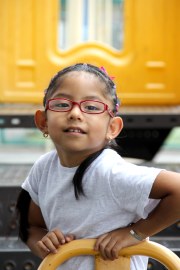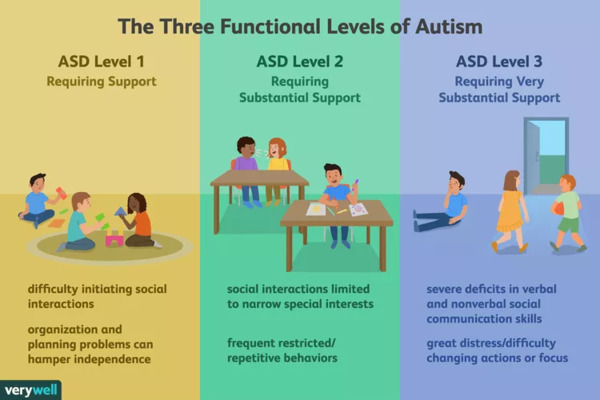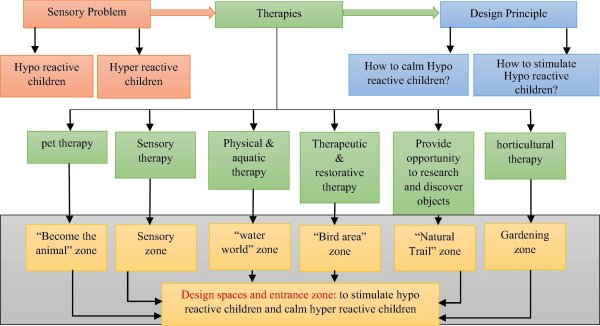4 Effective Tips to Design a Playground for Autistic Kids
Autism is a neurological disorder. It impacts how an individual learns, interacts and behaves with another. The condition affects social skills and causes repetitive actions yet has a distinct set of strengths. The good news is that besides therapy and study programs, a park can also contribute to the good emotional space of an autistic child.
In this environment, a child with autism are less likely to be scared of socializing, have a clear understanding of safety awareness and reduce the fear of misunderstandings with fellow visitors. CDC estimates that about 1 in 44 8-year-old children have been identified as ASD which is 23 per 1,000. According to the newest autism statistics, the ASD prevalence in the US has increased by 312% since 2000. Therefore, the focus on effective methods of therapy will continue to be vitally important.
A specially designed play area offers sensory inputs. It is tremendously useful for children with autism since it helps boost their tactile, visual and auditory systems. Getting the layout and facilities right is vital else it can turn into a dangerous place for kids with disabilities. They may have meltdowns or struggle with going to busy places. Depression can also set in which anyway affects 7% of all children with autism. Below are a few tips to design a playground that can be a safe space to express themselves.
1. Incorporate Sensory Play
Engaging the senses can help a child develop proprioceptive and vestibular systems. This can improve orientation and balance. More than 90% of children with ADS report hypo and hyper sensitivities in different domains which range from mild to severe. This can be handled with a sensory play which ensures healthy brain development to build nerve connections. It can be done by adding sensory panels, motion play, musical instruments and water fun to support problem solving-skills, cognitive growth and social interaction. Educate parents so that highly sensitive kids do not get overwhelmed.
2. Build Quiet Places
An autistic child may feel sensory overloads leading to entering a freeze, flight or fight mode in response. They start feeling panicky or unsafe. A cozy space away from the main play area can create a positive environment. Parents can also enjoy peace of mind knowing that their child is less likely to run away. This is a common tendency and surveys have found that children diagnosed with autism aged between 4 and 10 have often tried to elope to escape unpleasant sensory stimuli. Hiding spots offer a good break and help them recenter. You may consider pods, small shelters or anything cocooned.
3. Highlight Nature
Children with autism benefit from staying close to nature. They gain motor skills and agility. Exposure also boosts observational skills, reasoning and awareness. The child must be able to scoop leaves with their hands, jump in puddles or smell flowers. Teach them to take photos of their surroundings, paint trees and ponds and feed birds. Autistic children can also learn about changing seasons and being kind to animals in the playground.
Young kids get a clear idea of colors like blue, green, yellow and orange when nature is in abundance around them. They tend to become calm and relaxed in the presence of natural elements like a cool breeze.
4. Smooth Surfacing
This is a big step in creating a safe space for children living with autism. Engineered wood fiber, poured-in-place rubber, recycled bonded rubber, recycled rubber loose fill and recycled rubber tiles are the best choices. Make sure these are not highly textured to avoid the hassles of children with crutches or wheelchairs. Kids with ADS are likely to stumble upon anyone who does not experience motor impairments. They may also jump off equipment like monkey bars which could be slightly harmful. But a safety surface can diffuse the impact and keep them from severe injuries like fractures.
This is especially crucial since playground accidents are responsible for approximately 200,000 US emergency department visits in children below 18 years. You may add special paths and tracks covered with mulch instead of an open layout. This gives a sense of direction for them to move in and reduce anxiety levels.
Autistic kids should be able to naturally interact with peers with different abilities. Build a socialization area with benches and picnic tables since these special children have a strong desire for friendship. Do your best to accommodate all skill sets and sensitivities to introduce them to new experiences as well.







